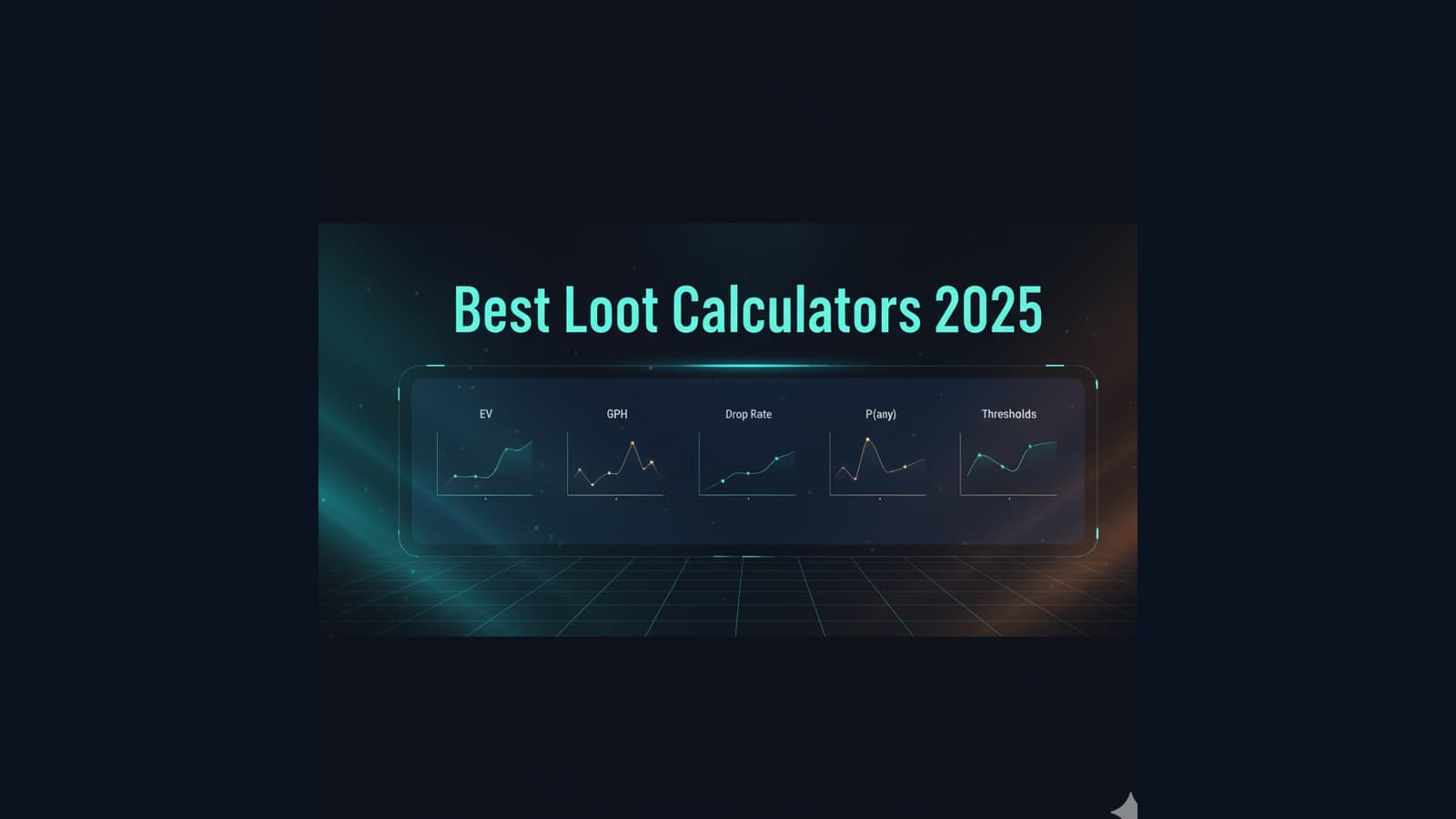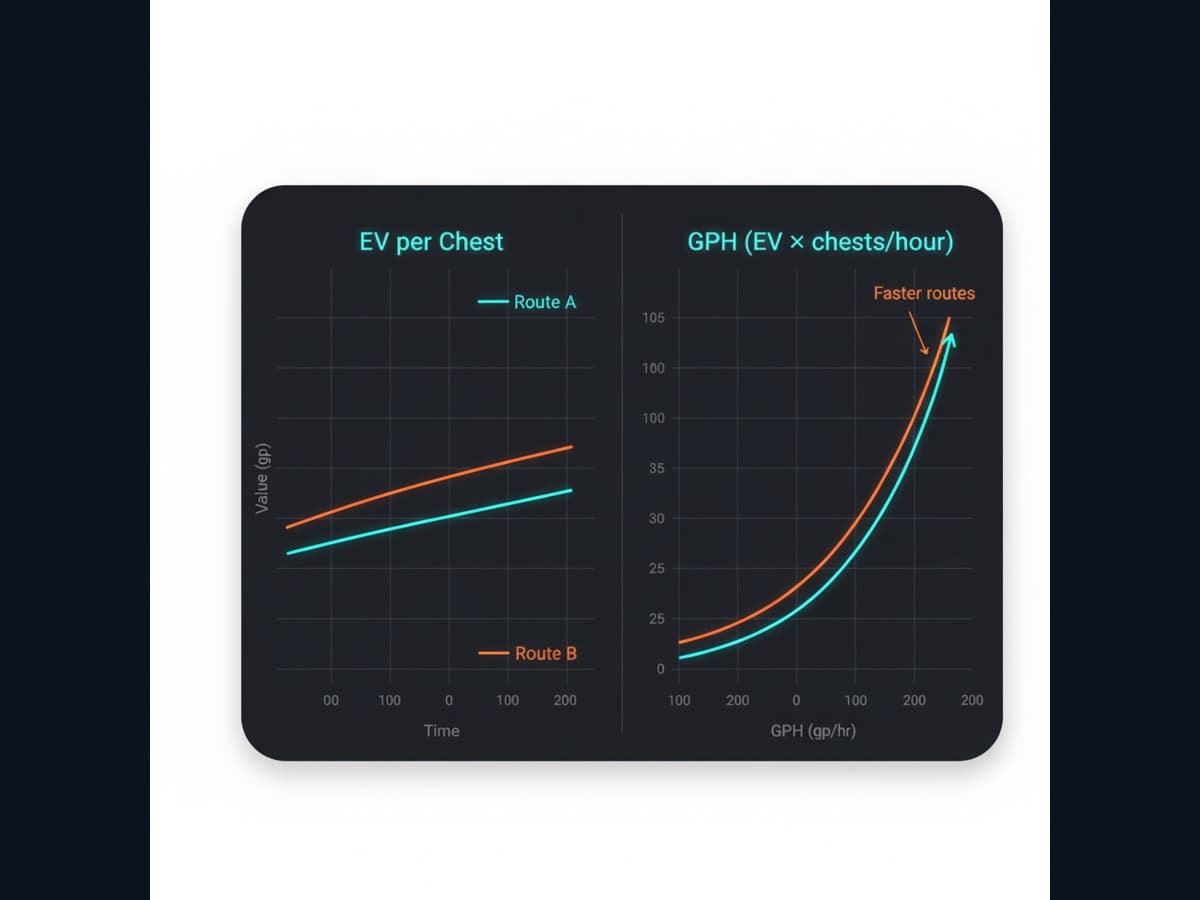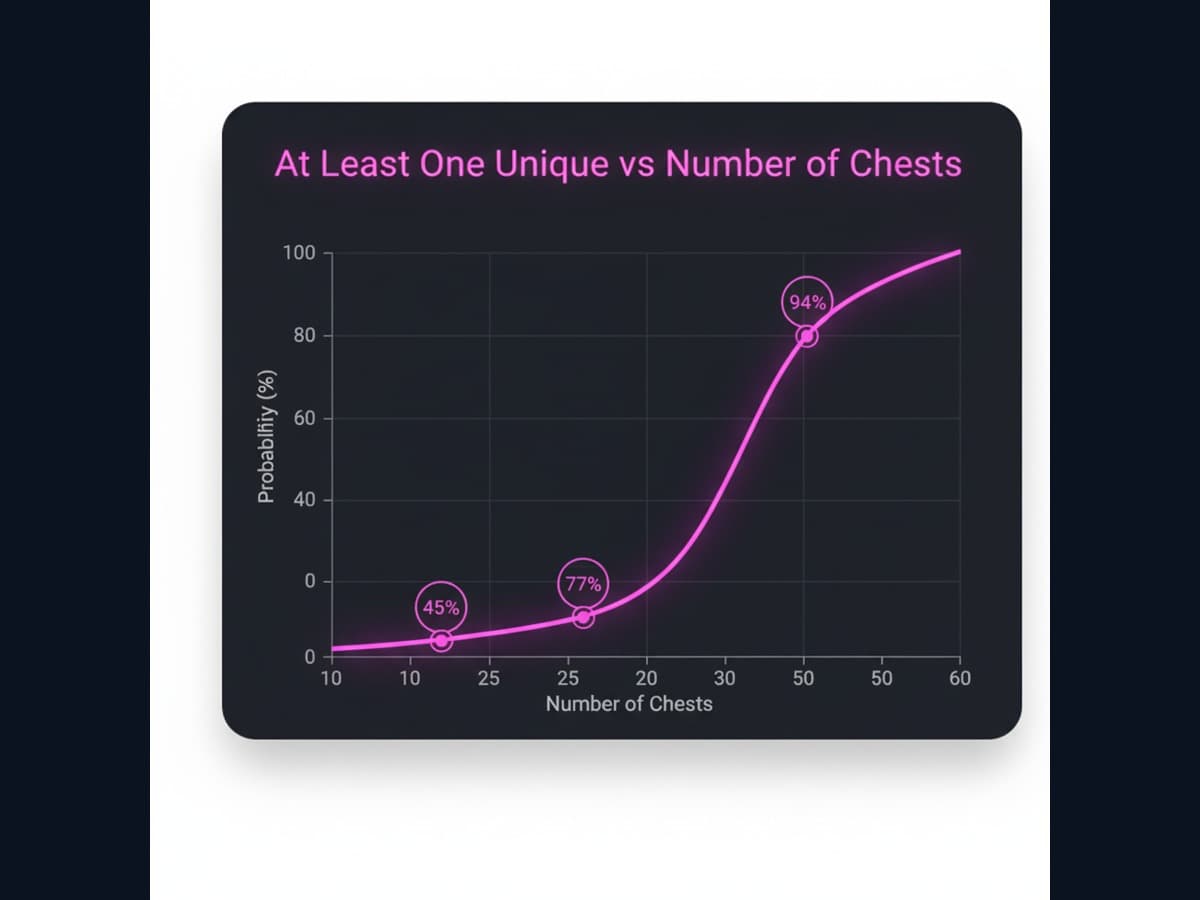Best Loot Calculators for Popular Games 2025 (Free Drop Rate, EV & GPH Tools)
Finding the best loot calculators in 2025 shouldn't feel like a grind. This guide curates the top tools across popular games and explains the math behind them—drop rate models, EV (expected value), GPH (gold per hour), and when time-to-threshold beats raw EV.

Every pick is reproducible, link-able, and built on transparent assumptions so you can re-run the numbers yourself.
Shortcuts
Editor's Picks: Best Loot Calculators by Game (2025)
→ Diablo 4 Loot Calculator – Helltide EV, Cinders/Hour & Chest Mix
The Helltide Loot Calculator models cinders/hour, travel time, and Mystery vs Regular chest mix. You get EV per chest and runs per hour, plus a shareable URL for routes. It's ideal when patch notes tweak chest costs or event pacing.
Why it ranks
- Reproducible inputs (cinders/hour, travel time, mix %)
- Clear separation of EV vs. time for true GPH decisions
- Season snapshots and assumptions disclosed
Power tip
Use a high Mystery% when travel density is strong; shift toward Regular if travel dominates your loop.
→ WoW Delves Calculator – Tiers, Weekly Vault Thresholds & GPH
Delves has two realities: EV per chest climbs with tier, but time-to-threshold (e.g., 30 or 40 chests/week) can be faster in a lower tier. The calculator helps choose the tier that hits vault without kneecapping your GPH.
Why it ranks
- Side-by-side EV vs time
- Built-in threshold math for weekly vault
- Season data with explicit caveats
Power tip
When a week's playtime is tight, optimize hours to threshold first, then min-max GPH with leftover time.
→ OSRS Barrows Calculator – EV/Run, Unique Odds & Route Planning
Barrows success is both EV/run and a union probability puzzle: what's the chance of at least one unique over N chests? The calculator exposes both with binomial math and shareable setups.
Why it ranks
- Transparent EV/run and unique odds
- Route/time guidance for GPH
- Works with price snapshots and explains variance
Power tip
Plan by thresholds: "How many runs do I need for ≥X% chance of one unique?" Then decide if the time budget justifies it.
Honorable Mentions – Popular Search Favorites
- •Path of Exile currency calculator (mapping, scarabs, stacked deck EV)
- •Gacha pity calculator for banner odds (see soft pity and hard pity)
- •Warframe relic drop calculator (refinement vs probability)
- •Destiny 2 raid loot tables & exotic odds
- •Lost Ark honing chance calculator
How We Rank Loot Calculators (Methodology & Signals)
→ Accuracy & Data Sources (Patch Notes, Logs, Cross-Checks)
Great tools cite where rates come from: in-game sources, dev notes, verified community logs. We prefer calculators that show season/version stamps and link to data where possible.
→ Independent Trials & Union Probability
Most loot uses independent rolls per chest. For "at least one unique in N tries," we use union probability:
P(any) = 1 − (1 − p)^NSee independent rolls and union probability.
Formula snippets you can reuse
Binomial (exactly k successes):
C(N,k)·p^k·(1−p)^(N−k)At least one:
1 − (1−p)^NEV/hour:
EV/action × actions/hourWorked example (quick math)
If p=5.8% per chest and N=25: P(any) ≈ 1 − 0.942^25 ≈ ~77%.
→ EV vs. GPH (Time Is a Resource)
EV is value per action; GPH multiplies EV by actions/hour. Faster runs can beat higher EV per chest if they produce more chests.

Price Snapshots vs Live Markets
Use snapshot prices for reproducible posts. Live markets are volatile; annotate date and source.
Biases to watch
- •Survivorship (posting only lucky sessions)
- •Small samples (wide confidence intervals)
Versioning matters
If an activity changes cost or table, the calculator should flag season compatibility.
→ UX Signals: Shareable Links, Mobile Controls, A11y
We reward tools with shareable URLs, keyboard-friendly sliders, labels bound to inputs, and aria-live announcements for changing results. It helps everyone—including creators making guides.

Free Loot Calculator Tools & APIs (2025)
→ Public or Documented APIs
Some calculators expose a lightweight API or schema-documented endpoints for route sharing. Even without a formal API, querystring share links enable repeatable testing.
→ Sheet-Based Models That Still Work
Good spreadsheets survive because they:
- Disclose every assumption;
- Are forkable;
- Keep a changelog.
Self-Verification Checklist
- ✓Do you see inputs and formulae?
- ✓Can you recompute EV with a pen?
- ✓Are limits/caveats stated?
- ✓Does a share link reproduce your result?
Buyer's Guide: How to Pick the Right Loot Calculator
→ Match the Tool to Your Constraint
If your constraint is time, prefer tools that optimize hours to threshold. If it's gold, maximize steady GPH.
When "Faster" Beats "Fancier"
A lower tier or closer route can finish thresholds sooner—even if per-chest EV is a bit lower.
Blend routes with diminishing returns
Past the first threshold, a hybrid route can preserve sanity and consistent GPH.
Don't forget enjoyment
If two options tie, pick the one you actually enjoy running.
Frequently Asked Questions – Loot Calculators & Probability
What's the difference between EV and GPH?
EV is the average value per chest; GPH multiplies EV by chests/hour. Anything that increases actions/hour (better travel, cleaner pathing) raises GPH even if EV/chest stays the same. See binomial distribution and independent rolls for the underlying math.
How big should my sample be?
Bigger is better. As a rough rule, gather enough chests that your 95% CI feels narrow (e.g., hundreds of rolls for rare drops). See confidence interval.
Are pity systems "independent trials"?
Classic pity modifies independence. Soft pity increases p after certain counts; hard pity guarantees a success at a cap.
Can I use these results in a guide or video?
Yes—please link back to the calculator page and include the date/version of your test so viewers can reproduce it.
Recommended Starter Set (Quick Links)
Methodology, Assumptions & Sources (Site-wide Template)
- •Models: independent rolls, union probability, binomial.
- •Separation of concerns: EV (value) vs GPH (value/time).
- •Data sources: patch notes, official posts, verified community logs.
- •Known limitations: price volatility, patch drift, route density variance.
- •Reproducibility: inputs and formulae are printed on page; shareable links preserve state.